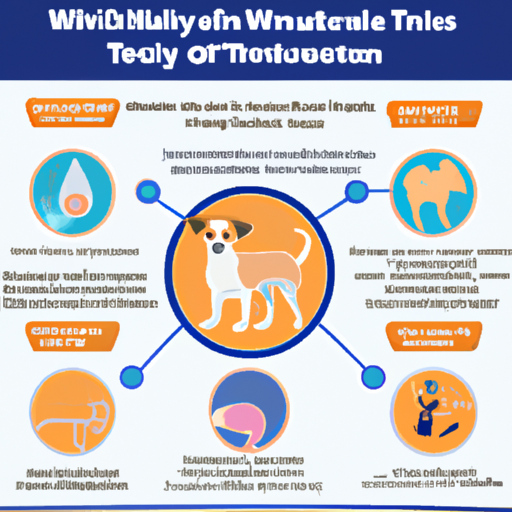As a caregiver, you may wonder about the health of your furry friend. One common issue that dogs often face is urinary tract infections (UTIs). UTIs can cause a lot of discomfort for your beloved pet, and recognizing the causes can help you prevent these ailments.
H2: Understanding Urinary Tract Infections
Urinary tract infections occur when bacteria enter the urinary tract, causing inflammation and discomfort. The urinary tract comprises the bladder, kidneys, ureters, and the urethra. Infections can occur in any part of this system but are most common in the lower tract, the bladder, and the urethra.
UTIs are more common in female dogs because of their shorter urethra, but they can also occur in males. While UTIs are rarely life-threatening, they can lead to serious complications if left untreated, like kidney infections.
H2: Causes of UTIs in Dogs
There are several reasons why your dog might develop a UTI. These include:
- Bacterial Infections: The most common cause of UTIs in dogs is bacteria that enter the urinary tract. This can happen when fecal matter gets into the area or when bacteria from the skin move up the urethra.
- Bladder Stones: Bladder stones can cause UTIs in dogs. These stones can block the flow of urine, allowing bacteria to multiply.
- Weak Immune System: Dogs with weak immune systems are more prone to infections, including UTIs.
- Other Health Conditions: Conditions like diabetes, Cushing’s disease, or kidney disease can increase the risk of UTIs.
H2: Signs of UTIs in Dogs
If your dog has a UTI, you might notice the following symptoms:
- Frequent urination
- Blood in the urine
- Difficulty urinating or painful urination
- Urinating in inappropriate places
- Unusual thirst
If you notice any of these signs, it’s important to take your dog to the vet as soon as possible.
H2: Preventing UTIs in Dogs
Prevention is often the best cure, and there are steps you can take to minimize the risk of UTIs in your dog:
- Ensure your dog has access to fresh water at all times to promote urine production.
- Take your dog for regular walks to allow for frequent urination, reducing the chance of bacteria buildup in the urinary tract.
- Feed a balanced diet to support their immune system.
- Keep your dog’s genital area clean to prevent bacteria from entering the urinary tract.
H2: Treatment of UTIs in Dogs
Treatment for UTIs usually involves antibiotics to kill the bacteria causing the infection. Your vet may also recommend a special diet or supplements to prevent future infections. In severe cases, hospitalization and IV fluids may be necessary.
FAQs
Q: Can a UTI go away on its own in dogs?
A: While some mild UTIs may clear up on their own, it’s always best to consult with a vet to avoid complications.
Q: Can UTIs in dogs be prevented?
A: While you can’t completely prevent UTIs, following the steps in the prevention section above can significantly reduce the risk.
Q: Are UTIs in dogs contagious?
A: No, UTIs are not contagious and can’t be passed from dog to dog.
Q: How long does it take for a UTI to clear up in dogs?
A: With proper treatment, most UTIs clear up within 10-14 days.
Q: Can UTIs in dogs reoccur?
A: Yes, some dogs may have recurring UTIs due to underlying health conditions or anatomical abnormalities.



